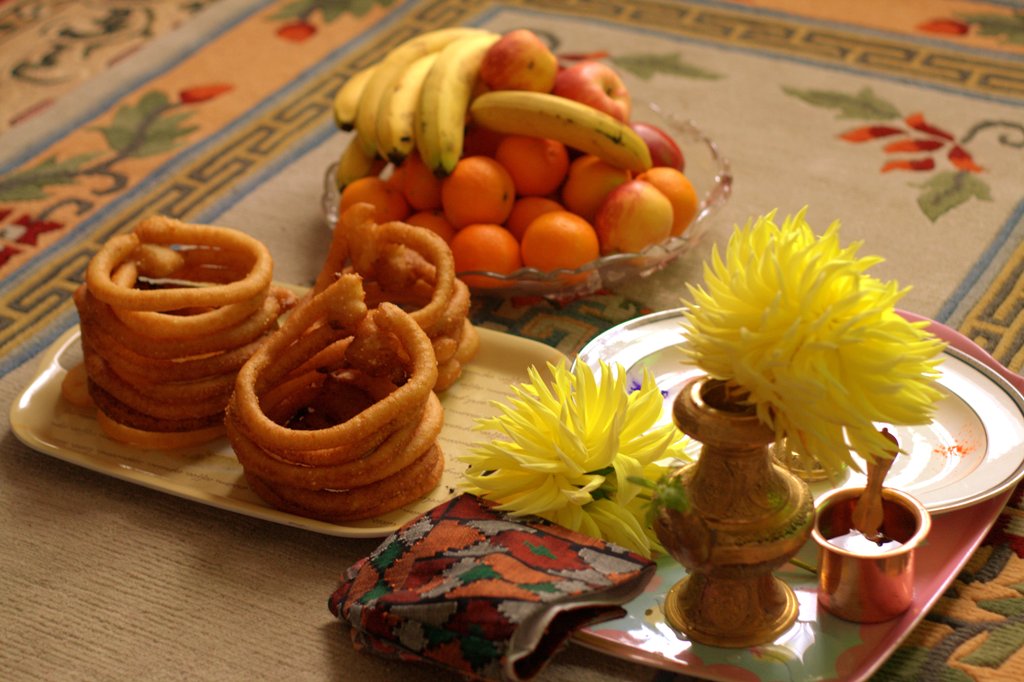Tihar: A 5 days hindu festival

Tihar is a Hindu Festival celebrated for five days which comes right after Dashain. People celebrate it as Diwali across Sri Lanka, India and Bangladesh with regional variation. In like manner Nepalese of all Hindu ethnic groups celebrate this festival with their own variation. . As a matter of fact 95% of the people in Nepal are Hindus and they celebrate Tihar by worshiping the Hindu goddess Laxmi for all five days.
The festival is celebrated from Trayodashi of Kartik Krishna to Kartik Shukla Dwitiya every year. Furthermore Tihar in general signifies the festival of lights.Simultaneously diyos are lit both inside and outside the houses to make it illuminate at night. This five-day festival is considered to be of great importance as it shows reverence to not just the humans and the Gods. It also shows reverance to the animals like crows, cows and dogs who maintain an intense relationship with humans.
KAAG TIHAR

The first day of the festival is called Kaag Tihar. Crows and ravens are worshiped by offerings of sweets and dishes placed on the roofs of houses. The cawing of crows and ravens symbolizes sadness and grief in Hinduism, so devotees offer crows and ravens food to avert grief and death in their homes. Tihar among Gurkhas represents the divine attachment between humans and other animals .
KUKUR TIHAR

The second day is called Kukur Tihar (worship of the dogs). It is also called the Khicha Puja by the Newars. Dogs are worshiped once each year on this day. Dogs are believed to be messengers of Lord Yamaraj, the God of Death, Therefore, people offer garlands, tika and delicious food to dogs and acknowledge the cherished relationship between humans and dogs. In other words this day is also observed as Narka Chaturdashi.
LAXMI PUJA

The third day is the most important of all and is called Laxmi Puja where people worship sacred cows. Accordingly in Hinduism, cow signifies prosperity and wealth. In ancient times people benefitted a lot from the cow. Thus on this day people show their gratefulness to the cow by garlanding and feeding the cow with the best grass. Meanwhile houses are cleaned and the doorways and windows are decorated with garlands made of Sayapatri (marigolds) and Makhamali flowers (chrysanthemums).
In the evening the goddess of wealth, Laxmi, is thanked an worshiped for all the benefits that were bestowed on the families by lighting oil lamps (Diyo) on doorways and windows to welcome prosperity and well being. At night girls enjoy dancing and visiting all the houses of the neighborhood with musical instruments singing and dancing. This is known as Bhaili and is celebrated all night long collecting money as tip from houses and share the bounty amongst themselves.
GOVARDHAN PUJA

On the fourth day of Tihar, there are three different known pujas, depending on the people’s specific cultural background. It is observed as Goru Tihar or Goru Puja (worship of the oxen). People who follow Vaishnavism perform Govardhan Puja, which is worship towards goverdhan mountain. People worship cowdung as a representation of Govardana Parvat in this day. Additionally majority of the Newar community on the night also perform “Ma Puja” (worship of self).
From this day onwards Tihar is celebrated with Deusi. Deusi is mostly sung by the boys while the Bhailo is sung by the girls. Deusi is balladic in nature. It tells the story of the festival. One person in the group narrates and the rest sing chorus. For this reason in return the home owners give them money, fruit and Selroti. Nowadays social workers and politician along with young people visit local homes and sing these songs, and collect funds for welfare and social activities.
BHAI TIKA

The fifth and last day of Tihar is called Bhai Tika. Sisters apply tika to the foreheads of their brothers to ensure long life and thank them for the protection they provide.
It is believed that Yamraj, the God of Death, visited his sister, Goddess Yamuna, on this day. On this day she applied the auspicious tika on his forehead, garlanded him and fed him special dishes. Afterward together they ate sweets, talked and enjoyed themselves to their hearts’ content. Upon parting, Yamraj gave Yamuna a special gift as a token of his affection and, in return, Yamuna gave him a lovely gift which she had made with her own hands. With this in mind that day Yamraj announced that anyone who receives tilak from his sister will never die on that day.
Sisters make a special garland for their brothers from a flower that wilts only after a couple of months. This symbolizes sister’s prayer for her brother’s long life. Brothers sit on the floor while their sisters perform their puja. Sisters circle brothers dripping oil on the floor from a copper pitcher and applying oil to their brother’s hair. Given that they apply a seven-colour tika on the brother’s forehead. Along with the seven-coloured tika, sisters provide brothers with Sagun, sweets, Makhamali (Gomphrena globosa) garland, and a sacred cotton thread of Tantric importance, similar to Janai thread meant to protect their bodies. Next, brothers give tikas to their sisters in the same fashion along with an exchange of gifts. This ritual is practised regardless of whether the brother is younger or older than the sister.
Those without a sister or brother join relatives or friends for tika. This festival strengthens the close relationship between brothers and sisters.
Post a comment
You must be logged in to post a comment.

